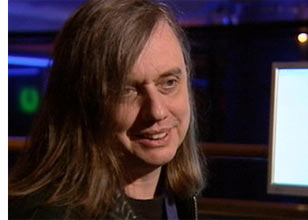
Steve Kurtz
Some comments on Lynn Hershman's Strange Culture, first cut - work in progress, by Gabriella Giannachi
Strange Culture is written, directed and edited by Lynn Hershman Leeson, shot by Hiro Narita, with Tilda Swinton, Peter Coyote, Thomas Jay Ryan, Josh Kornbluth, and Steve Kurtz with an original score by the Residents, 85 minutes. The film also features Greg Bordowitz, Steve Dietz, Robin Held, Claire Pentecost, and Nato Thomson. The producers are Lynn Hershman Leeson, Lise Swenson and Steven Beer.
Strange Culture is a film about Steve Kurtz. Because it is a film about one of the most prolific, innovative, as well as aesthetically adventurous and politically active artists, bridging between the old and the new millennium, it is also a film about the contemporary, its politics, art, and life. This is a film we should all watch.
To talk about Steve Kurtz, is also to talk about Critical Art Ensemble, a leading US theatre company whose texts have been translated in at least eight languages and whose work is shown internationally, in galleries, museums, cinemas and on the web. Through their publications, web-activity, and performance, Critical Art Ensemble, founded in 1987, have been working to denounce the dangerous connections between corporate homogenisation, globalisation, the military and the biotechnological industries. The company have been working at the point of intersection between art, technology, critical theory and political activism. Theirs is a powerful, post-Brechtian form of activist theatre.
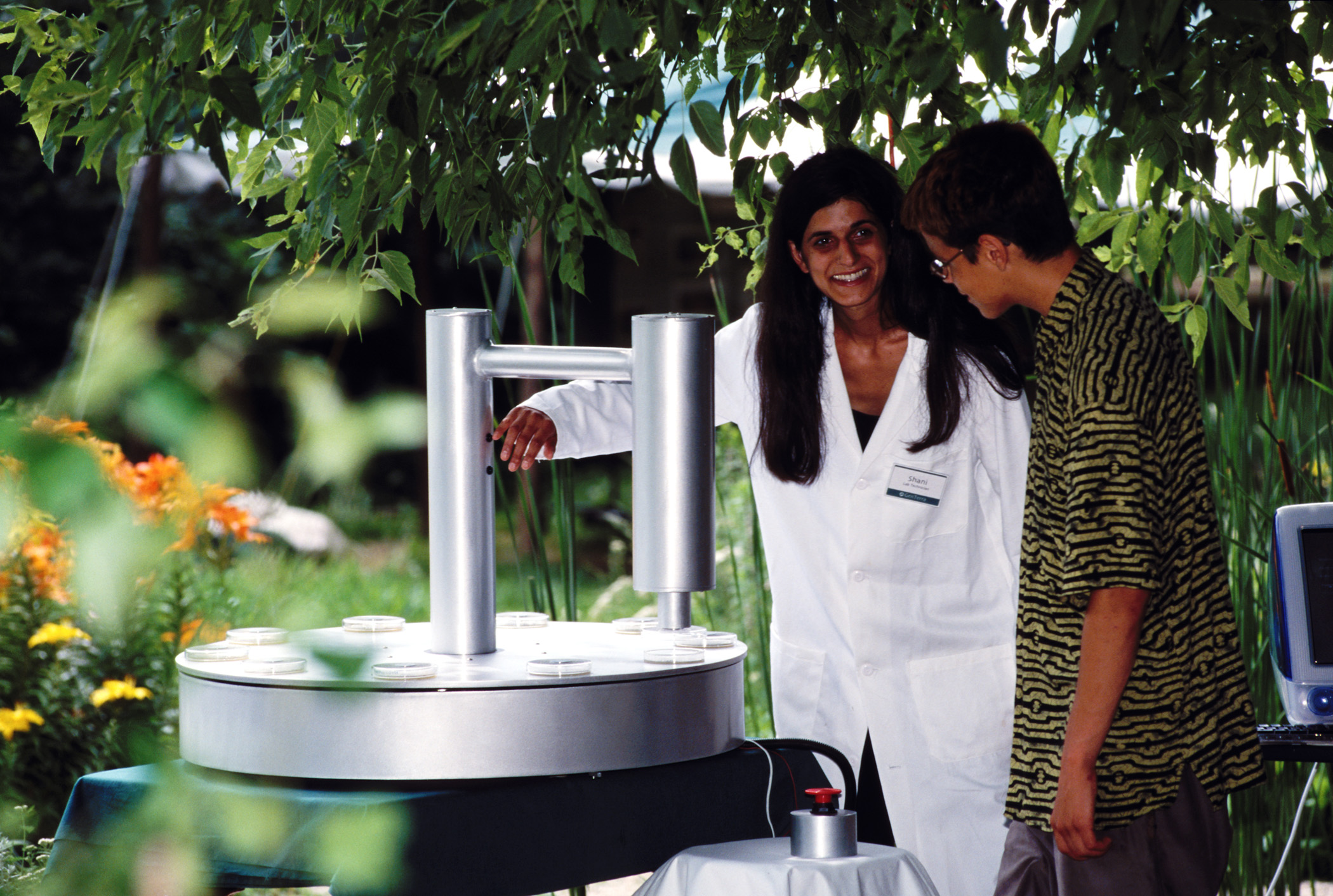
Beatriz da Costa in Critical Art Ensemble's Genterra
The film starts by showing Steve and Hope Kurtz at work on their exhibition. It intercuts with the actor performing Steve, Thomas Jay Ryan, in character telling us 'My name is Steve Kurtz. I'm an artist. Since 1987 I've worked in a collective of five artists. We call ourselves the Critical Art Ensamble.' We then see CAE at work and hear Steve Kurtz's voice continue: 'What Critical Art Ensamble does is identify things that we think are counter to the advancement of social justice and then we are trying to do something about it and we are trying to do that at a cultural level.' Like the work of Critical Art Ensemble, the film is informative, both on their work and on the society that provokes it.
Strange Culture is a film about America - today's America. In fact, it is a film about what has become of America after 9/11. It is a film that shows the profound impact of fear on society. It shows us a world that no longer protects its own citizens, a world that confuses art and research with terrorism.
Strange Culture is also personal, moving film. It is a film that tells the story of the man, Steve Kurtz, who on May 11th 2004, awoke to find that Hope, his beloved wife of over twenty years, had unexpectedly died. Subsequent investigations found the cause of death to be a fatal heart attack. However, the paramedics at the scene had become alarmed at the scientific materials in Kurtz’s house and called the FBI and the Joint Terrorism Task Force. The property was then cordoned off, Hope Kurtz’s body, their computer, books and papers seized and Steve Kurtz arrested.
As this remarkable film progresses, we see Steve and Hope Kurtz at work, making art, Steve teaching, Hope arriving home with a new suit bought especially for Steve. We watch the flow of everyday life. Then see Steve Kurtz waking that tragic morning. I find, in watching these moments, that I experience the same utter horror and disbelief that I felt when, just a few weeks later, I heard the news of Steve Kurtz's situation. Hershman's carefully crafed film records the nightmarish sequence of events, always intercutting between Kurtz's own testimony, as well as those of his friends and colleagues, who were caught up in this extraordinary miscarriage of justice, with the film, as well as the actual filming of the film, thus reproducing, through this continuous act of doubling, the multiple ambivalences and presences that were formed in this story.
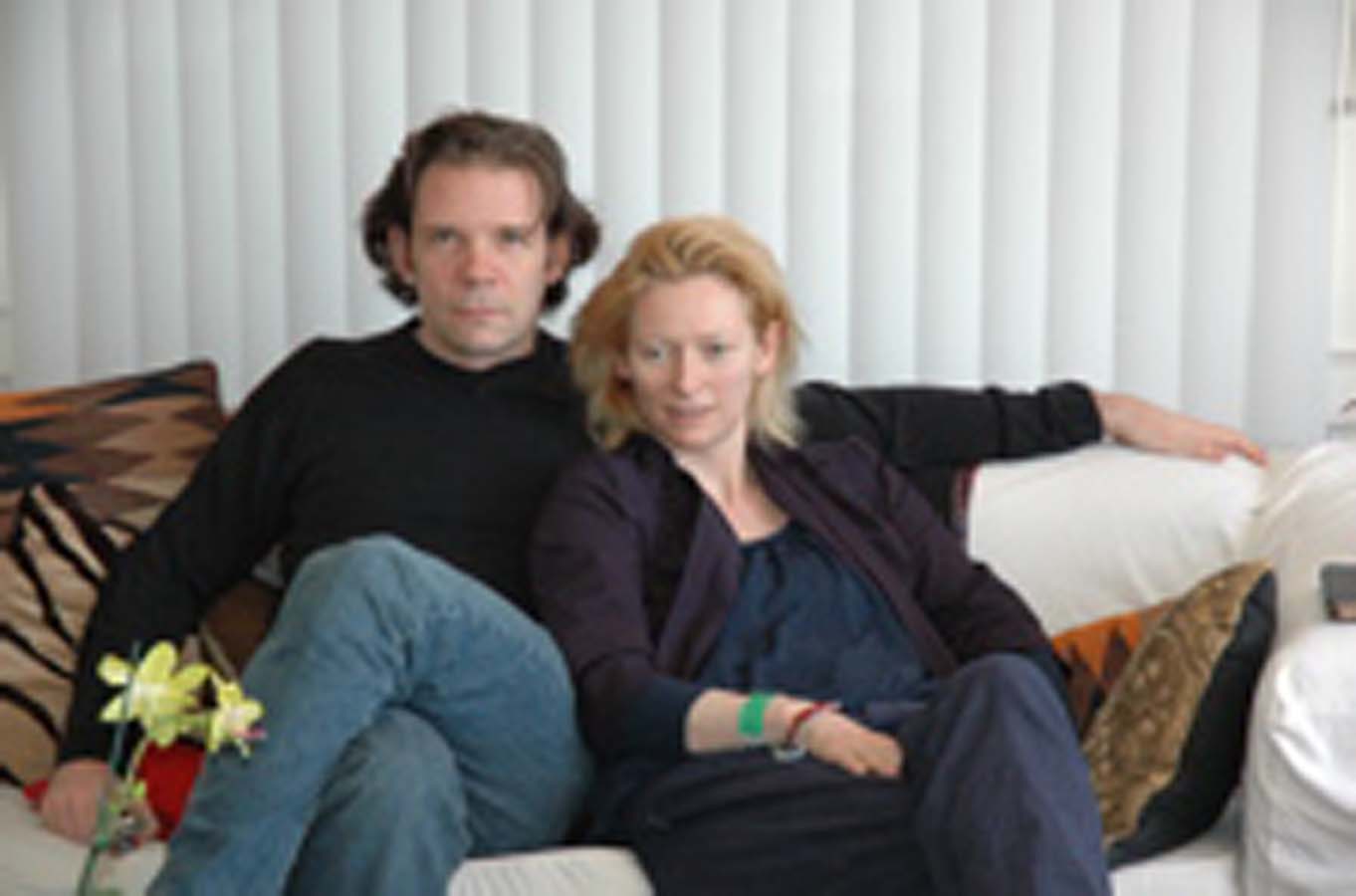
Thomas Jay Ryan and Tilda Swinton. Courtesy of Lynn Hershman
The film shows how it emerged that under the PATRIOT ACT it has become illegal in the United States to use biological research material and that ‘Whoever knowingly possesses any biological agent, toxin, or delivery system of a type or in a quantity that, under the circumstances, is not reasonably justified by a prophylactic, protective, bona fide research, or other peaceful purpose, shall be fined under this title, imprisoned not more than ten years or both’. Kurtz, in collaboration with Beatriz da Costa, was in fact utilising some harmless bacteria for the performance/exhibition ‘The Interventionists’ due to be held at the Massachusetts Museum of Contemporary Art where the company aimed at determining whether certain foods contained genetically modified organisms and thus raise awareness about genetically modified food.
Shortly after Kurtz’s arrest, subpoenas were issued to a number of people working with him: Adele Henderson, Chair of the Art Department at University of Buffalo; Andrew Johnson, Professor of Art at University of Buffalo and member of Critical Art Ensemble; Paul Venouse, Professor of Art at University of Buffalo; Beatriz da Costa, Professor of Art at University of California at Irvine and member of Critical Art Ensemble; Steven Barnes, Florida State University and Critical Art Ensemble member; and Dorian Burr and Beverly Shlee, also members of the collective.
In the film, we hear accounts of these events and we see them enacted, always, moving between enactment and document, performance and interview, displacing not so much the account of the events, which remains uniformly clear throughout the film, but American culture itself, seen here as deeply suspicious of its own intelligentia.
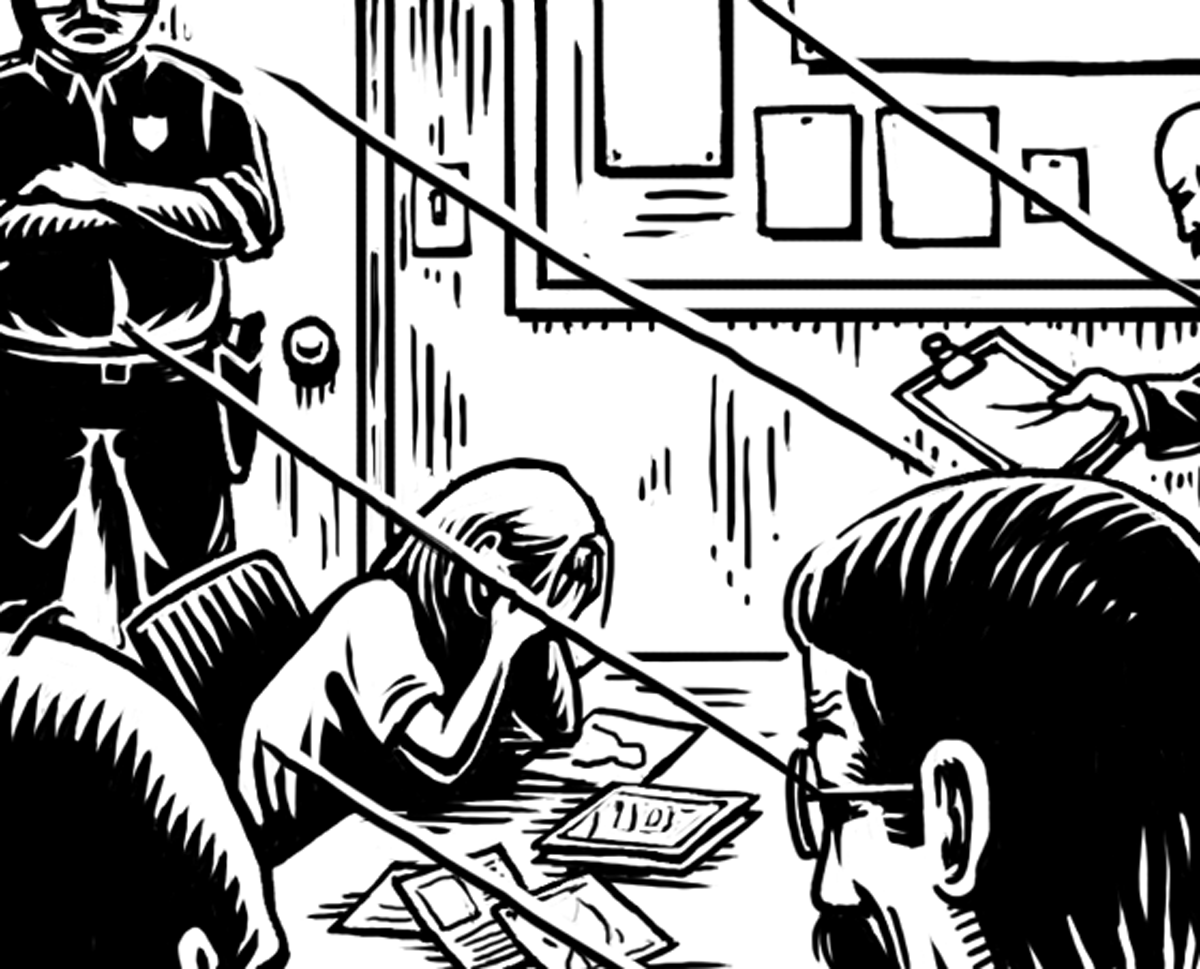
Image courtesy of Lynn Hershman
A Grand Jury was convened at the behest of the FBI with the apparent intent to collect evidence to indict Kurtz on charges of possessing biological materials though Kurtz and his colleague Dr Robert Ferrell, Professor of Genetics at the University of Pittsburgh, who allegedly had helped him to procure the bacteria, were finally arraigned on charges of mail and wire fraud which carry a maximum sentence of 20 years in prison. Under the arraignment conditions, Kurtz was subject to travel restrictions, random and scheduled visits by a probation officer and periodic drugs tests. The film shows a moving testimony by Ferrel, read out by Peter Coyote. All we see here, is Coyote standing by a table. We know it's Ferrell, now ill, speaking. All we wanted, to paraphrase his words, was to make public what's happening in science today.
I remember two moments that moved me to tears - Steve Kurtz talking about the fact that Tilda Swinton is playing Hope. 'I can't think of any better gesture of remembrance'
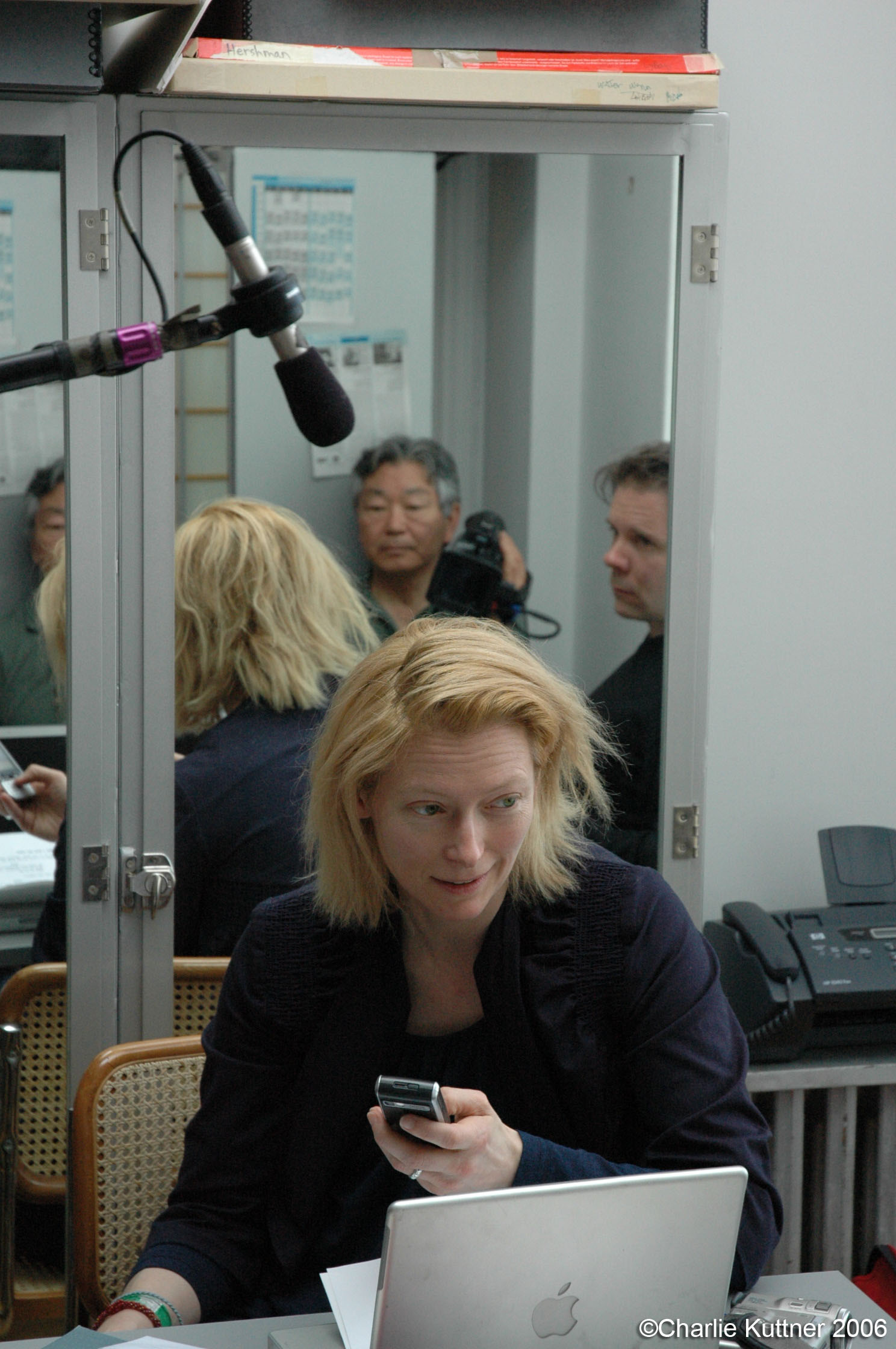
Tilda Swinton. Courtesy of Lynn Hershman
and Tilda Swinton reflecting about Steve's situation. Tilda Swinton: 'The second she died even the gesture of making art changed.'
Steve Kurtz is an extraordinary man, who has found the courage in himself to denounce political injustice, even through his own painful story. Right through the film, he offers cutting edge and very pictorial accounts of contemporary American society. He tells us about his friends, colleagues, his elderly parents and above all Hope. Still avaiting trial - the trail will be in 2007 - he is stronger than in the awful days immediately following her death, but his ordeal has not as yet ended. Therefore it is now more important than ever that we do not forget this story as there is still time to do something about it.
What we don't see in the film is that following Steve Kurtz's arrest, various letters and petitions were circulated and signed by scholars in fields as diverse as Art, Computing, Theatre and Performance Studies, Chemistry, English, Music, New Media, Photography, Visual Culture, Politics, Biological Sciences, Electronic Art and Architecture. Many individuals also signed – teachers, film-makers, artists, industrialists, architects, museum curators, software engineers, general practitioners, students, art critics, poets, biologists, publishers, microbiologists, teachers, community health specialists, museum and festival curators, epidemiologists, environmentalists, lawyers and attorneys. The signatures came from the United States but also countries as diverse as Macedonia, the Netherlands, Scotland, Switzerland, Russia, Serbia and Montenegro, New Zealand, Sweden, Slovenia, Israel, Malta, Finland, the UK, Argentina, Slovakia, Taiwan, Australia, Denmark, Iceland, South Africa, Singapore, Wales, Italy, Germany, Austria, France, Canada, Ireland, South Korea, the Slovak Republic, India, Belgium, Norway, Spain, Venezuela, Hungary, Brazil, Portugal, Greece, Turkey and Japan.
One of the petitions, signed by some thirty-six US West Coast academics, including Lynn Hershman – the top researchers in the field of new media at the Universities of Santa Barbara, Berkeley, Irvine and San Diego – sums up the general concern:
we see here a pattern of behaviour that leads to the curtailing of academic freedom, freedom of artistic expression, freedom of interdisciplinary investigation, freedom of information, exchange, freedom of knowledge, accumulation and reflection, and freedom of bona fide and peaceful research. All of which are fundamental rights and cornerstones of a modern academic environment (http://www.caedefensefund.org/).
This film, Steve Kurtz's story, is something we must all become aware of and engage with if we want to continue to live in a free society.
For more information on CAE see their website at www.critical-art.net/ or on wikipedia [link] and for Steve Kurtz [link]. The CAE defence site is at [link]
My article on Steve Kurtz and CAE is at  ctr_article2.pdf
ctr_article2.pdf

An early review of the film shown at ISEA is at [link]









 ctr_article2.pdf
ctr_article2.pdf
